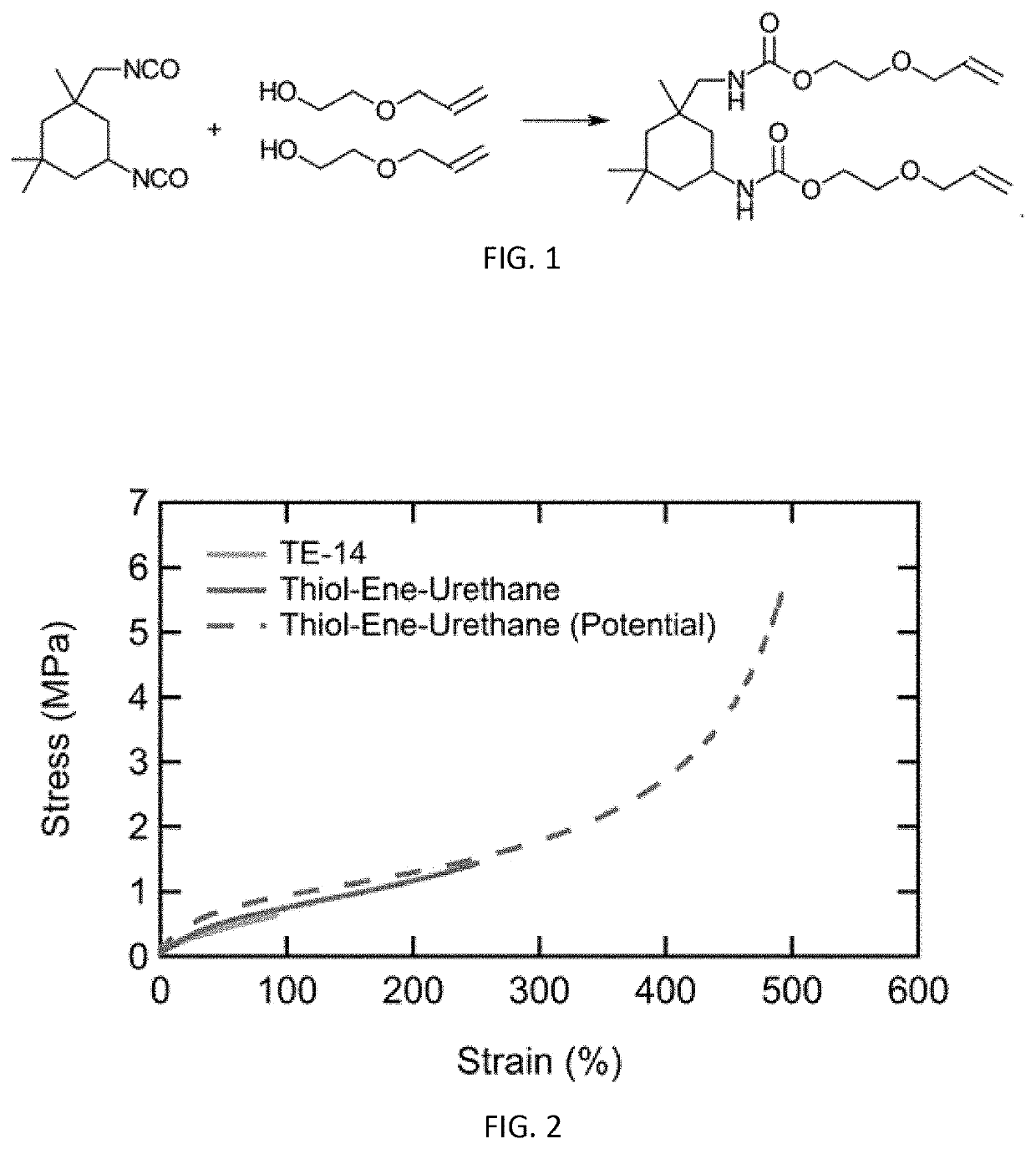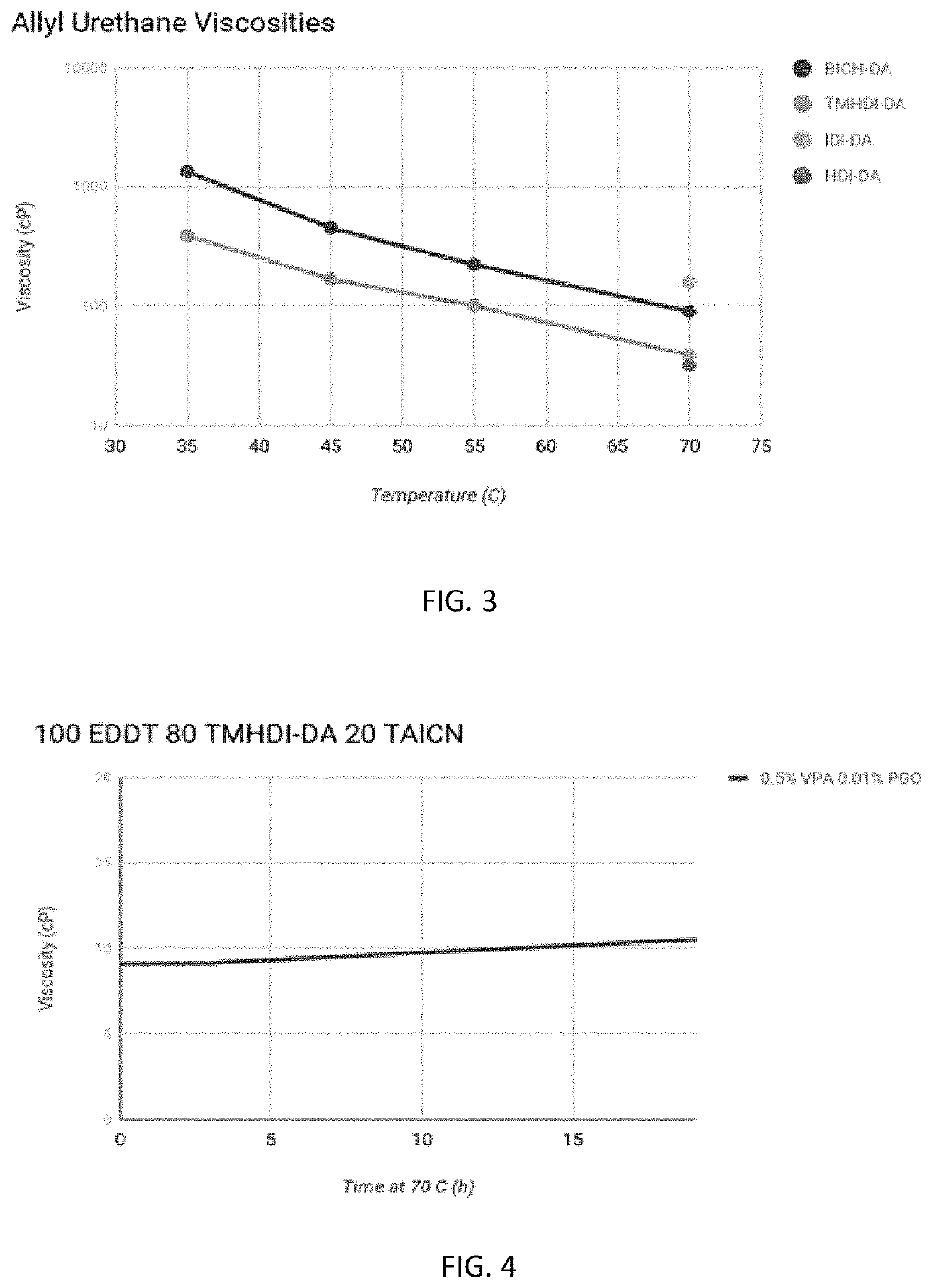Thiol-ene printable resins for inkjet 3D printing
a technology of 3d printing and printable resins, which is applied in the field of 3d inkjet printing, can solve the problems that elastomeric materials have not been used in 3d printing in general, the use of jetted inks of acrylic photopolymers for 3d printers the use of inkjet printing is not generally useful, so as to achieve the effect of less oxygen inhibition, lower oxygen sensitivity, and higher conversion ra
- Summary
- Abstract
- Description
- Claims
- Application Information
AI Technical Summary
Benefits of technology
Problems solved by technology
Method used
Image
Examples
Embodiment Construction
[0029]In brief overview, the invention relates to the composition of a new 3D printable material comprising allyl urethanes that have increased strength upon curing.
[0030]As will be described in greater detail below, compositions were formulated with essentially two functionality groups resulting in a material that acts as a chain extender (small amount of tri-functional monomer was added to crosslink the material). Thus, the polymer chain of the material is longer and does not connect to other polymer chains. This characteristic is particularly important for elastomeric materials, which are desired to be more stretchable, rather than more rigid. Such compositions will provide materials that have relatively low viscosity, desirable polymerization characteristics, better curing properties and with increased stability over longer periods of time.
[0031]Urethane bonds have high degrees of hydrogen bonding due to containing both a proton donor and acceptor. Incorporation of urethane bond...
PUM
| Property | Measurement | Unit |
|---|---|---|
| Pressure | aaaaa | aaaaa |
| Pressure | aaaaa | aaaaa |
| Fraction | aaaaa | aaaaa |
Abstract
Description
Claims
Application Information
 Login to View More
Login to View More - R&D
- Intellectual Property
- Life Sciences
- Materials
- Tech Scout
- Unparalleled Data Quality
- Higher Quality Content
- 60% Fewer Hallucinations
Browse by: Latest US Patents, China's latest patents, Technical Efficacy Thesaurus, Application Domain, Technology Topic, Popular Technical Reports.
© 2025 PatSnap. All rights reserved.Legal|Privacy policy|Modern Slavery Act Transparency Statement|Sitemap|About US| Contact US: help@patsnap.com



